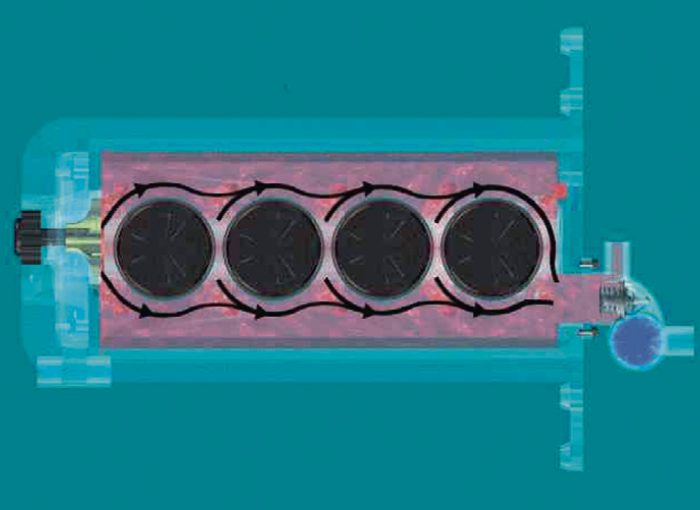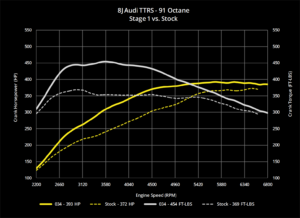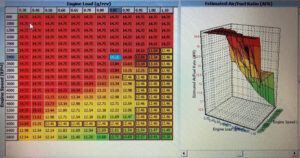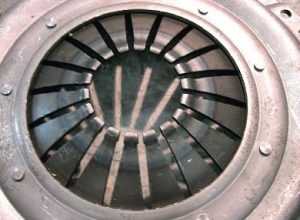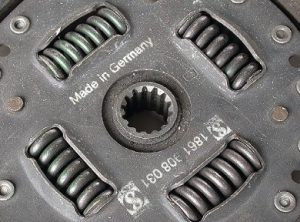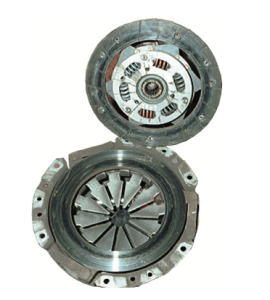Coolant flow and temperature variations across the block are important aspects of an engine’s operation that play a critical role in ensuring the engine operates optimally and efficiently. In this blog, we will discuss coolant flow and temperature variations in detail.
What is Coolant Flow?
Coolant flow refers to the movement of coolant through an engine. The coolant absorbs heat generated by the engine and carries it away to the radiator, where it is dissipated into the atmosphere. Proper coolant flow is critical to ensure the engine operates at the optimal temperature range.
The coolant flow rate is determined by several factors, including the water pump capacity, the size of the coolant passages in the engine, and the thermostat opening temperature. The water pump is responsible for circulating the coolant throughout the engine. The size of the coolant passages in the engine determines how much coolant can flow through the engine, and the thermostat opening temperature controls when the coolant starts flowing through the engine.
What is Coolant Temperature?
Coolant temperature refers to the temperature of the coolant as it flows through the engine. The coolant temperature is directly related to the engine’s operating temperature. The ideal operating temperature for most engines is between 195°F and 220°F (90°C to 105°C).
Coolant temperature is monitored by the engine’s coolant temperature sensor, which sends the information to the engine control module (ECM). The ECM then uses this information to adjust various engine parameters, including fuel injection, ignition timing, and idle speed, to ensure the engine operates at the optimal temperature range.
Coolant Flow and Temperature Variations Across the Block
As the coolant flows through the engine, it absorbs heat from various engine components, including the cylinder walls, cylinder head, and engine block. The temperature of the coolant varies across the engine block due to differences in heat transfer rates.
The areas of the engine that generate the most heat, such as the combustion chamber, will have the highest coolant temperatures. Conversely, areas of the engine that generate less heat, such as the oil cooler or transmission cooler, will have lower coolant temperatures.
The coolant flow rate also affects the temperature variations across the engine block. A low coolant flow rate can cause hot spots in the engine, leading to localized overheating and potential engine damage. A high coolant flow rate can cause the coolant to flow too quickly through the engine, reducing the amount of time the coolant has to absorb heat from the engine components.
Conclusion
Coolant flow and temperature variations across the engine block are critical aspects of an engine’s operation. Proper coolant flow ensures that the engine operates at the optimal temperature range, while proper temperature variations across the engine block prevent localized overheating and potential engine damage. Understanding how coolant flows and how temperature varies across the engine block can help diagnose engine problems and ensure the engine operates efficiently and optimally.
Coolant Flow:
As mentioned earlier, coolant flow is critical to the engine’s operation. The coolant absorbs heat from the engine components, including the combustion chamber, cylinder walls, and cylinder head, and carries it away to the radiator, where it is dissipated into the atmosphere. Without proper coolant flow, the engine can overheat, leading to engine damage or failure.
The coolant flow rate is determined by several factors, including the water pump capacity, the size of the coolant passages in the engine, and the thermostat opening temperature. The water pump’s capacity determines how much coolant can be circulated throughout the engine, and the size of the coolant passages in the engine determines how much coolant can flow through the engine.
The thermostat opening temperature is another critical factor that affects coolant flow. The thermostat is a temperature-sensitive valve that regulates the coolant flow rate through the engine. When the engine is cold, the thermostat is closed, preventing the coolant from flowing through the engine. As the engine warms up, the thermostat gradually opens, allowing the coolant to flow through the engine.
Temperature Variations Across the Engine Block:
The temperature of the coolant varies across the engine block due to differences in heat transfer rates. The engine’s combustion chamber generates the most heat, and therefore, the coolant temperature in that area will be the highest. The cylinder walls and cylinder head also generate a significant amount of heat, leading to higher coolant temperatures in those areas.
On the other hand, areas of the engine that generate less heat, such as the oil cooler or transmission cooler, will have lower coolant temperatures. The coolant temperature is critical to the engine’s operation, as it affects several engine parameters, including fuel injection, ignition timing, and idle speed.
A low coolant flow rate can cause hot spots in the engine, leading to localized overheating and potential engine damage. For example, if the water pump is not working correctly, the coolant flow rate may be too low, leading to hot spots in the engine.
A high coolant flow rate can also cause problems. If the coolant flows too quickly through the engine, the coolant may not have enough time to absorb heat from the engine components, leading to lower coolant temperatures across the engine block.
Conclusion:
In summary, coolant flow and temperature variations across the engine block are critical to the engine’s operation. Proper coolant flow ensures that the engine operates at the optimal temperature range, while proper temperature variations across the engine block prevent localized overheating and potential engine damage. Understanding how coolant flows and how temperature varies across the engine block can help diagnose engine problems and ensure the engine operates efficiently and optimally.
Advantages of Proper Coolant Flow and Temperature Variations Across the Block:
- Optimal Engine Performance: Proper coolant flow and temperature variations across the engine block ensure that the engine operates at the optimal temperature range, leading to optimal engine performance.
- Reduced Engine Wear and Tear: Proper coolant flow and temperature variations reduce engine wear and tear by preventing localized overheating and potential engine damage.
- Improved Fuel Efficiency: When the engine operates at the optimal temperature range, fuel efficiency is improved, leading to cost savings and reduced emissions.
Disadvantages of Improper Coolant Flow and Temperature Variations Across the Block:
- Engine Damage or Failure: Improper coolant flow and temperature variations can lead to engine damage or failure. If the engine overheats, it can cause significant damage to the engine components, leading to costly repairs or engine replacement.
- Reduced Engine Performance: When the engine is not operating at the optimal temperature range, engine performance is reduced, leading to decreased acceleration, power, and efficiency.
- Increased Emissions: When the engine is not operating at the optimal temperature range, emissions are increased, leading to environmental pollution and potential fines for non-compliance.
Conclusion:
In conclusion, the advantages of proper coolant flow and temperature variations across the engine block outweigh the disadvantages. Proper coolant flow and temperature variations ensure optimal engine performance, reduce engine wear and tear, and improve fuel efficiency. On the other hand, improper coolant flow and temperature variations can lead to engine damage or failure, reduced engine performance, and increased emissions. Therefore, it is crucial to maintain proper coolant flow and temperature variations across the engine block to ensure optimal engine performance, reliability, and longevity.

